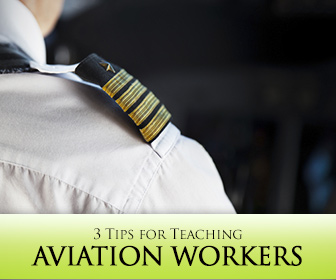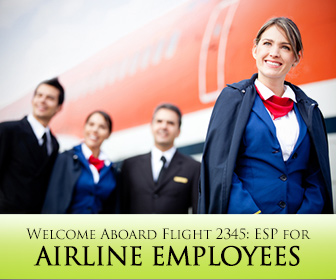Teaching English for special purposes often poses a challenge to ESL teachers however this does not need to be the case for you.
The most important difference to remember is that your students will normally have a basic understanding of the English language and that the thing they need to learn is mostly vocabulary and phrases related to the field you will be teaching. In this case, we will be talking about teaching English for people who work for airlines.
The airline industry employs a wide variety of people for a wide variety of jobs which range from pilots to fight crews, to baggage loaders and caterers as well as ground crews (people who guide the plane and people responsible for checking you in). From my research I found out that most airline companies require that the flight crew be fluent in at least two languages, and English is the second most common language for crew members.
When teaching the flight crew and others members of the airline industry it is important to remember that there are 3 main tools that will make your life easier. These are vocabulary lists, sample phrases and terms they may need and role playing exercises. When customers first interact with airline staff it is to check in so this is where we will start. You can get your students involved by having them bring in their training manuals or having them tell you a list of questions they normally ask at check in in their native language and then help them to translate it and help them to grasp the concepts. After you have your questions, you can involve them in a roleplaying exercise using the sample questions and responses below. “C” will stand for check in worker and “P” will stand for passenger
- C: Good Morning, do you have your ticket miss?
P: I am not sure which of these is my ticket but here are the papers.
- C: Can I see your passport?
P: Yes and here is my wife’s passport as well.
- C: Do you have any bags you would like to check today?
P: Here are the two that I need checked.
- C: Here is your boarding pass maim.
P: Thank you, have a nice day.
- C: Do you need any help with your luggage or perhaps a wheelchair? (to an older person)
P: Yes, dear, that would be very helpful.
- C: Would you like a window or an aisle seat?
P: Let’s go with window, I have never been to New York before.
- C: I am afraid your passport is expired sir, you cannot travel with it.
P: Is there anything you can do?
- C: If you do not have your ticket you can give me your name and passport and I can look you up in the system quite easily.
P: Great, here they are.
- C: Here is your boarding pass. You will need to be at the gate before 10:30 which is when boarding starts Mr. Headley.
P: Thank you. Is there anything else I need to do?
- C: Please make sure your luggage is not left unattended.
P: I will make sure to keep it with me at all times.
Another important thing your students will need to learn to do will be to give announcements. There are always announcements being made in the airports to notify people of things they need to do, to let people know about what is happening with their flights if they are delayed or something like that. A great way to teach these to your students will be to do what we did earlier and bring in their handbooks from work and have them select specific announcements they have trouble with and then go through it and define any words they do not understand and lastly have them practice giving the announcements as if they were at the airport working. I will share with you some simple short announcements that are generic and can be used by any airline employee which were retrieved from http://airodyssey.net/reference/inflight/ (contains many different airline announcements) and from http://www.airlineannouncement.com/ (contains a full safety briefing)
- In preparation for takeoff, please ensure that your seat backs and tray tables are in their full upright and stowed positions, your seat belts are securely fastened and all your carry-on items are securely stowed. Federal Aviation Regulations require customers to comply with the lighted customer information signs, other posted signs, and crewmember instructions. Please observe the FASTEN SEATBELT and other lighted signs until they have been turned off by the Captain. The NO SMOKING sign will remain illuminated for the duration of the flight and smoking is prohibited throughout the cabin and in the lavatories. All lavatories are equipped with smoke detection systems and Federal Law prohibits tampering with, disabling, or destroying these systems.
- Ladies and gentlemen, the Captain has turned off the Fasten Seat Belt sign, and you may now move around the cabin. However we always recommend keeping your seat belt fastened while you are seated. You may now turn on your electronic devices such as calculators, CD players, and laptop computers. In a few moments, the flight attendants will be passing around the cabin to offer you hot or cold drinks, as well as breakfast/dinner/supper/a light meal/a snack. Alcoholic drinks are also available at a nominal charge/with our compliments. (On long flights with inflight entertainment: Also, we will be showing you our video presentation.) Now, sit back, relax, and enjoy the flight. Thank you.
Lastly it is important to teach your students the necessary vocabulary for the airline industry.
As a teacher this may be difficult since you do not work in the airline industry, however you can use their training manuals to pick out words they do not understand, and you can also use sites like the following in class or as a homework assignment for your students.
- http://www.bbc.co.uk/worldservice/learningenglish/flatmates/episode50/languagepoint.shtml
- http://www.flashcardexchange.com/cards/airline-vocabulary-the-travel-academy-1558206
- http://www.businessenglishresources.com/business-vocabulary-air-travel/

